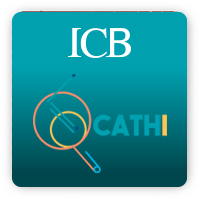Copper oxide nanoparticles and bulk copper oxide, combined with indole-3-acetic acid, alter aluminum, boron, and iron in Pisum sativum seeds
The interaction of CuO nanoparticles (nCuO), a potential nanopesticide, with the growth hormone indole-3- acetic acid (IAA) is not well understood. This study aimed to evaluate the nutritional components in seeds of green pea (Pisum sativum) cultivated in soil amended with nCuO at 50 or 100 mg kg...
保存先:
| 第一著者: | |
|---|---|
| その他の著者: | , , , , |
| フォーマット: | Artículo |
| 言語: | en_US |
| 出版事項: |
2018
|
| 主題: | |
| オンライン・アクセス: | https://doi.org/10.1016/j.scitotenv.2018.04.003 https://www.sciencedirect.com/science/article/pii/S0048969718311732 |
| タグ: |
タグ追加
タグなし, このレコードへの初めてのタグを付けませんか!
|
| 要約: | The interaction of CuO nanoparticles (nCuO), a potential nanopesticide, with the growth hormone indole-3-
acetic acid (IAA) is not well understood. This study aimed to evaluate the nutritional components in seeds of
green pea (Pisum sativum) cultivated in soil amended with nCuO at 50 or 100 mg kg−1, with/without IAA at
10 or 100 μM. Similar treatments including bulk CuO (bCuO) and CuCl2 were set as controls. Bulk CuO at
50 mg kg−1 reduced seed yield (52%), compared with control. Bulk CuO at 50 mg kg−1 and nCuO at
100 mg kg−1, plus IAA at 100 μM, increased iron in seeds (41 and 42%, respectively), while nCuO at
50 mg kg−1, plus IAA at 100 μM reduced boron (80%, respect to control and 63%, respect to IAA at 100 μM).
IAA, at 10 μM increased seed protein (33%), compared with control (p ≤ 0.05). At both concentrations IAA increased
sugar in seeds (20%). Overall, nCuO, plus IAA at 10 μM, does not affect the production or nutritional quality
of green pea seeds. |
|---|
